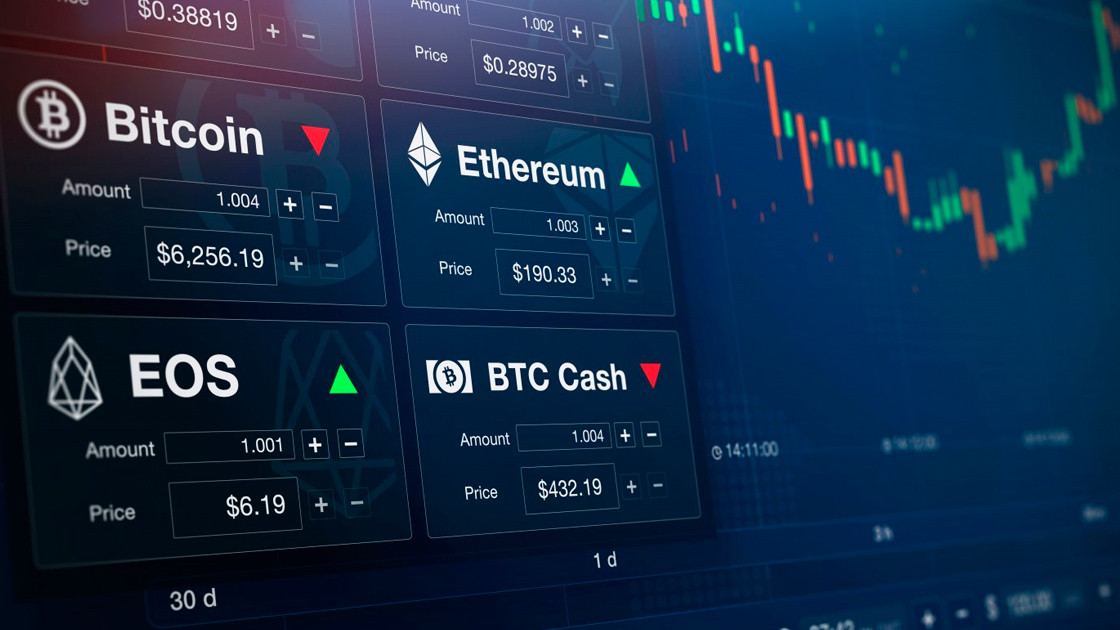Having bought your first bitcoins, you can exchange them for other tokens on any cryptocurrency exchange. You may be lucky in making a profit as soon as possible. You don't need to be an expert to start trading cryptocurrencies, but you need to take the first steps, and many people want to know how to get started quickly.
First, you can read reviews of cryptocurrency exchanges.
To start trading, you need to register on the selected exchange and confirm your account. You should be aware that most trading platforms now require the user to verify their identity. In addition to the fact that these companies must comply with the AML and KYS regulations, a verified account will be required when withdrawing funds (or your future millions!).
If you are a beginner, then you need to study the various exchanges that work with the residents of your region and are respected. You can find reviews of popular exchanges and read people's reviews. Even after verification on the exchange and gaining access to exchange wallets, many traders prefer long-term storage of funds in non-custodial wallets outside the exchange. However, it often becomes necessary to transfer funds to the exchange to "cut" a certain amount of dollars. At the same time, it is possible that storing funds in an exchange wallet will be the most convenient for you. Crypto veterans, however, like to say: "If you don't keep private keys, then you don't have cryptocurrency."
Here is the basic set of data that exchanges want to know: first name, last name, country, date of birth, email.
Markets, wallets, and orders
After verification on the exchange, you can start trading on it, and for this, you need initial funds. If you already have popular coins such as bitcoin (BTC), bitcoin cash (BCH), or ether (ETH), then they need to be deposited into an exchange wallet. Some exchanges also allow you to buy/sell cryptocurrency for fiat money. You need to learn how to go through two-factor authentication (2FA), which will open all the options available to you. Most exchanges have several sections, for example:
- "Markets";
- "Wallets" (also "balance", "deposits");
- "Settings and profile";
- "Orders".

Trending: Kevin O'Leary promises to increase investment in digital assets
The "markets" option brings the user to the exchange and shows all crypto and fiat pairs available for trading on the platform.
The section "wallets" displays all wallets available on the exchange. This is where you can fund your account, withdraw funds and store all digital assets supported by this exchange. Here you will also find wallet addresses that you need to specify when replenishing them, and you can also fill out a form with data if you need to withdraw funds at some point.
In the "settings and profile" section, you can configure two-factor authentication; provide information about yourself, email, and other important data associated with your account. This also includes passwords, API keys, user interface settings, IP whitelisting, and more. In this section, you will also see if your account is verified, and the withdrawal limit will also be indicated here. In the "orders" section, users will find their orders - executed and unfulfilled.
Sometimes orders may be partially filled, and this is normal. This happens if you set up an order to buy cryptocurrency at a certain price, and there are not enough coins at that price. In these cases, the exchange may execute ¼ or some part of your order, although as coins appear at the price you require, the entire order may be executed. In the "orders" section, you will also find your trading history that took place in your account.
Placing an order on the exchange, be it to buy or sell, is intuitive. If a trader plans to sell 10 Ether (ETH) for dollars (USD), then the limit (default) order type or conditional order is usually used. A limit order is used for traditional buying and selling, while a conditional order must meet certain conditions. Newbies should choose a traditional limit order to sell their first cryptocurrency. In the "quantity" window you need to enter "10 ETH" - the number of coins you want to sell. After that, you need to select the sale price, and there are several options here: the user can sell the asset at the current "bid / ask price" - the highest that the market is willing to pay for the coin. There is also the "ask / ask price", which is the lowest price the market is willing to pay for a cryptocurrency at any given moment. And finally, there is the "last price" - this is the price of the last transaction made by someone. Of course, users can set the price they want, but usually, beginners have to choose between the above three options. (It should also be borne in mind that outwardly the functionality of various exchanges may differ from each other). After specifying the order type, quantity and price, the exchange will show you the total value of the transaction, including the commission charged by the exchange for the exchange operation. After the aforementioned settings, your next order command is “sell ETH”, which will work depending on what sell price you set. If your set price is higher than the asking price, then your order will not be triggered until there is demand in the market for coins at your price. Some exchanges have an option to set an "expiration" for orders, which allows you to set the desired duration of the order or extend it. And of course, you always have the option of canceling an order.

The "markets" section should show the trader all information on orders - current market orders and trading history. On the same page, most likely, the main trading chart will be displayed, showing the current rate and dynamics of prices of cryptocurrencies, as well as a visualization chart of the current order book ("order book"). The order books and charts set up for different time frames give the trader an idea of the current state of the market, indicating bearish/bullish sentiment.
Charts, instruments, and indicators
Basic cryptocurrency charts that show their prices and current trends, as well as some tools for working with charts on the exchange, can help the trader to better predict the short-term and long-term market dynamics. After familiarizing yourself with the exchange and completing a few simple trades, you can familiarize yourself with some technical indicators and charting tools. For example, the Relative Strength Index (RSI) indicates how quickly and widely the price of a cryptocurrency in the market changes (how volatile the price is). RSI gives an idea of the "oversold" / "overbought" market. Another “related” indicator for RSI is Stochastic, which measures current market impulses and collects data on support and resistance levels for a particular digital asset. Another "related" to the previous two is the MACD indicator, which consists of two exponential moving average lines, which are also used to track/evaluate market momentum. On a chart, these three technical indicators can often look the same, although they each have their trajectory.
All exchanges offer charts, indicators, and order lists to give traders an insight into current market events.
After examining the above-market momentum indicators, it is useful to learn about moving averages such as "Exponential Moving Average (EMA)" and "Simple Moving Average (SMA)". They display data over a range of time frames, visualizing long-term and short-term trends. Moving averages take into account trading statistics and can be set for any pivot points on the chart, allowing for the corresponding trend lines to be drawn. Most traders track 50-, 100- and 200-day moving averages in their practice. Thus, market momentum indicators and moving average trend lines represent a whole set of technical analysis tools (although there are also Bollinger bands, Arun oscillators, ATR lines, and orders to limit the percentage of losses, fractals, medians, and Fibonacci ratios).
Trending: Salvadorans are against buying bitcoins at the expense of the budget
Starting to trade cryptocurrencies does not mean that you need to "pounce" on technical analysis
To get started on cryptocurrency exchanges, it is important to learn how to deposit and withdraw funds, as well as make several transactions - as described above. Of course, you need to be careful, given that outwardly the functionality of the exchanges is different. It is important to have a non-custodial wallet (when no third parties are involved in storing funds in it) for long-term storage, which allows you to control your private keys, while replenishment of funds on the exchange wallet can be done at any time. The basics of cryptocurrency trading are quite simple, and those simple steps that we described above will allow novice traders to join this activity. Having started working on the exchange in this way, you will begin to feel and understand the market, and you will also be able to use the price fluctuations of cryptocurrencies to make a profit. The basic principle that must always be adhered to is to buy cheaper and sell high. Thus, getting the first idea of crypto exchanges and making a couple of easy trades is the best way to start trading on them.

A list of things you may need to start trading cryptocurrencies:
- valid email, username, and strong password;
- identity card, residential address;
- cash, cryptocurrencies, fiat deposits on the exchange;
- two-factor authentication - 2FA (some exchanges require the use of 2FA platforms - such as Authy/Google Authenticator);
- non-custodial wallet, wallet in an exchange account;
- own research of the reputation of exchanges, the features of their work;
- further study of the basics of technical analysis and trading methods.






